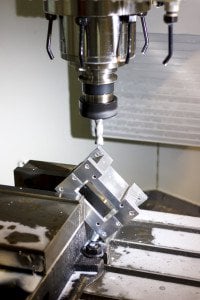Tube Bending Process
Tubes and pipes are not all created equally. Tubes and pipes are in more places than you would imagine: your home's plumbing, your automobile's engine, the railings of public building staircases, frames, handles, and other everyday objects all use pipes and tubes in some form or another. Manufacturers who develop parts for automobiles, plumbing, and aerospace applications use a variety of tube forming and tube bending processes to create them. Tube bending equipment and methods vary, however, depending upon the object being formed. In fact, tube bending itself is more of a general phrase referring to the formation of pipes and tubes rather than a proper name itself.
Most often, the tube bending process starts with two dies (the clamping block and the forming die) in a CNC tube bending machine. These types of machines aid the process of molding and shaping metal or other objects in a simple, time efficient manner -- something crucial to large-scale manufacturing companies where mass production is the goal. However, there are some variations when it comes to tube bending. Take a look at the processes below:
Tube bending can range from simple to complicated. The simpler tube bending processes can be completed by hand using human powered pipe bending machines. These machines may be powered by pneumatic or hydraulic assistance. Press bending is perhaps the simplest of these; its die can be used for bending pipes into multiple shapes, but it will only work on one size of tubing. Almost all forms of tube bending require a mandrel, or steel rod, which is inserted into the pipe to prevent it from collapsing.
A more complicated form of tube bending is rotary draw bending. This process uses several different kinds of dies and allows for very precise types of bending. This type of tube bending is often completed by CNC machines, which can be programmed to handle large manufacturing and bending jobs.
Some types of tube bending rely on high levels of heat. Heat induction uses temperatures between 800 and 2,200 degrees Fahrenheit (430 and 1,200 °C) to form the pipe while it is hot. Hot slab or sand-packing heats the pipe to 1,600 °F (870 °C) after it is packed with sand in order to form it; the sand helps to minimize distortion within the pipe.
Want to know more about tube bending? Contact a manufacturer who specializes in this area of tube forming and bending. You can also leave us a comment if you'd like further information and instructions for this process.
